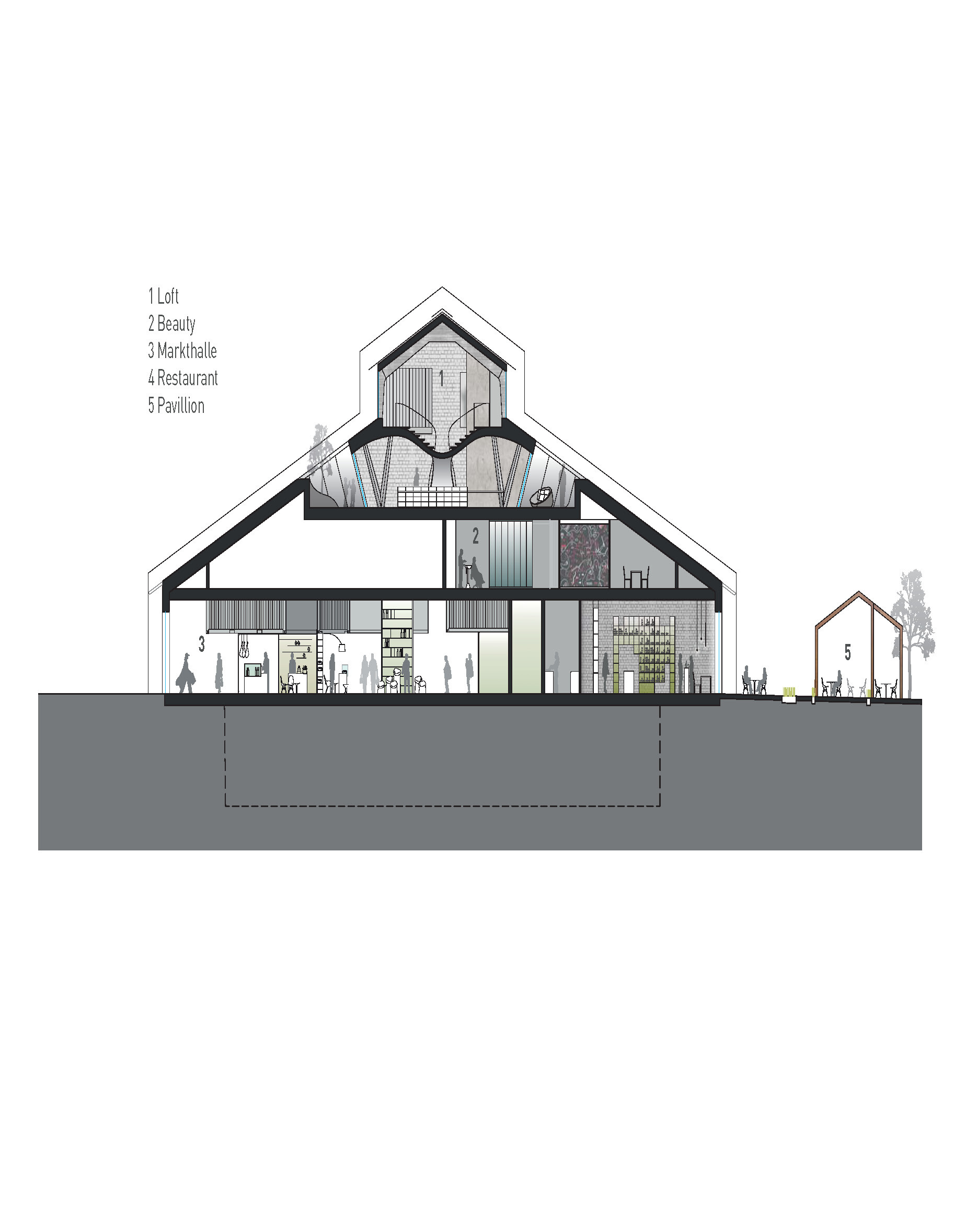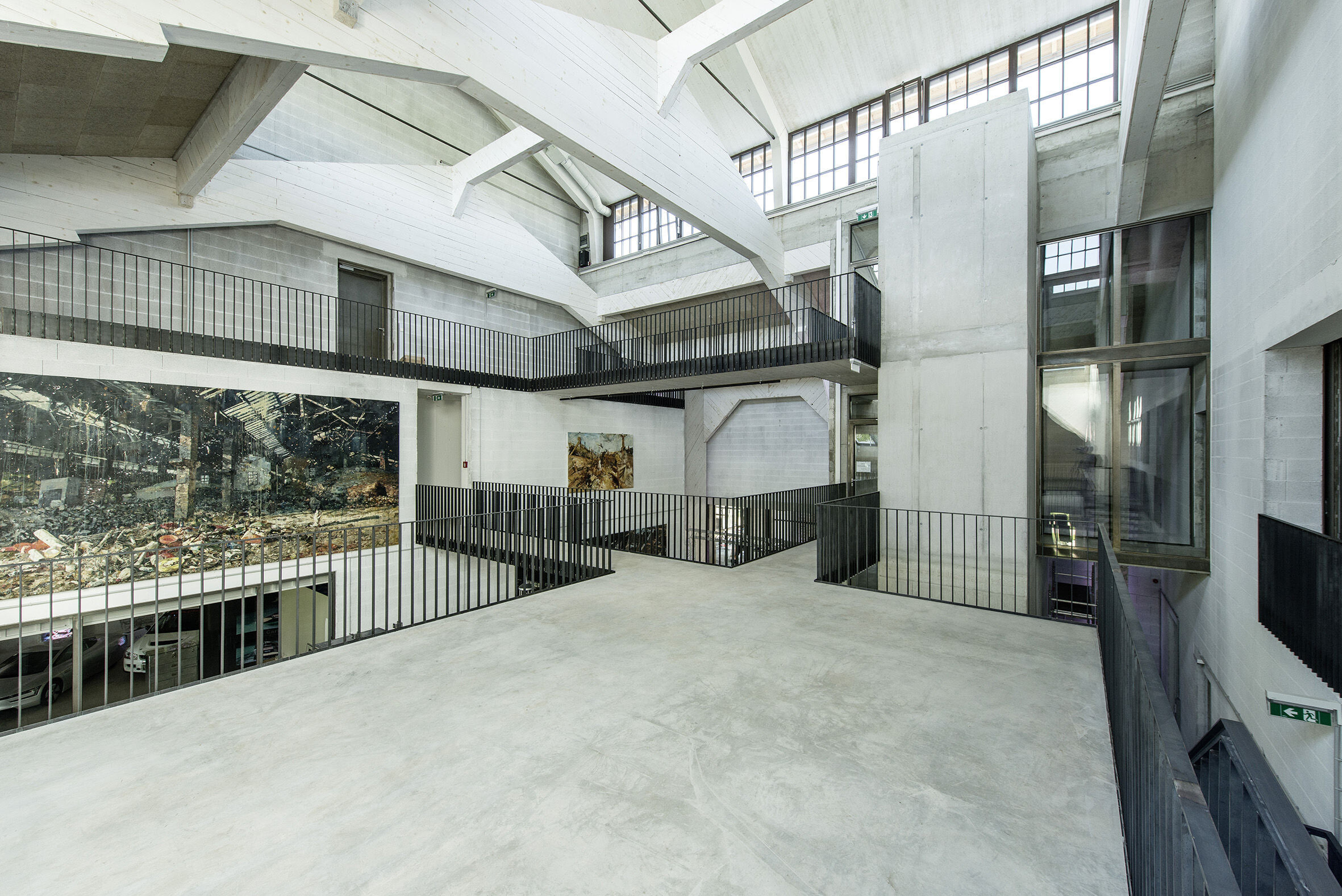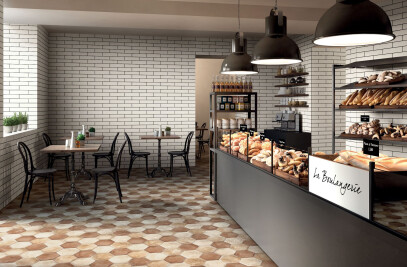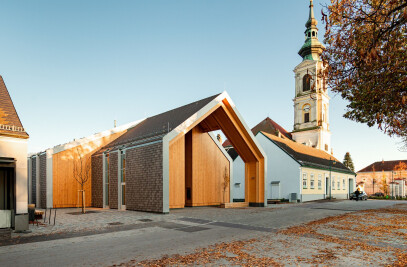Consolidation and revitalization in urban environments has become a major aspect in the development of this project. The client developed a new room and utilization concept in western Salzburg. Originally constructed in 1939 and expanded in 1952, Sillaber transformed Panzerhalle (engl. tank hangar), located at the Maxglan industrial park, into a building ensemble with a wide range of purposes. The result is a construction hip enough to be in Berlin’s coolest district Kreuzberg. Nearly 200 meters long, 50 meters wide and 16 meters high, Panzerhalle houses offices, businesses, a restaurant, seminar and event facilities and apartments. The public heart of the new location, however, is the new market hall—and the stunning, yet more secluded loft overhead. Two typical concepts of space: twice interpreted creatively, twice interpreted cleverly.

01. Market for taking a stroll—in container heaven Old armored vehicle hangar transformed into a new market hall
The hall, located on the outskirts of Salzburg, once churned out tanks and materials for the war effort. Its rebirth as a market hall required two distinct aspects: embracing the industrial charm and reinterpreting market typology. The market structure begins in the middle of the hall, where the existing brick walls serve as a frame. This creates an exciting contrast between a historical structure and modern architecture. A sophisticated space concept turns the historic industrial substance into a melting pot of producers of high-quality regional goods that are presented in such a manner that transcends shopping and creates a world of enjoyment. There are no direct paths, no counters and no specific floor plan, thus ensuring that visitors are in constant movement. Vendors and visitors experience the space, the production, shopping and enjoyment together, as a one-of-a-kind world of sensation.

The ease of appearance What typically comes to mind when picturing a market hall are stands and vendors stacked neck and neck in packed aisles. A front, back and a middle. Not in Panzerhalle.

“We wanted to create a place conducive to a leisurely stroll. Where efficient shopping is not the primary goal, but rather your embarking on a journey of discovery, where you find inspiration and are almost only incidentally aware of the goods being offered.”

Explaining the space concept is no easy task: it’s more of a model of staged room structure developed in all areas, levels and directions—also towards the top. Floor plans, walls and ceiling landscapes morph into one another to continuously create new impressions of rooms, niches and structures. The order seems random. But the space concept has been organized in painstaking detail as a stage for products—always with the respective user in mind, always tailored to their requirements. It is also a stage for people, where vendors and customers exchange their assigned roles and places, and thus communicate, enjoy and consume in a completely different manner.

“We have developed a room-in-room system that works with objects in all areas—and looks for order in the chaos.”
Nothing is more difficult to plan than chaos; nothing is as unnatural as planned nature. The new market hall is centrally organized, thus keeping the walls and the old brick walls in the forefront. Individual market stands are a variation of “one and the same,” while yet retaining their individual character.
“We virtually planned everything in the model. But it’s not until the variations of height, the variety of room divisions and the materiality, as well as the vendors and their products, are in the actual location you see a lively togetherness taking hold. Where you find diversity creating something uniform.”

Living order The most prevalent elements in the implemented structure are the white containers. They create not only an industrial atmosphere, but their clever layering, stacking and sequencing also create rooms of varying height and dimension. The containers, each unique in size, hang, stand and lay so that they are only fragmentarily perceptible. To additionally irritate the spatial image, mirrors and tiles have been placed between the containers on the ceiling, making the room’s true dimensions only perceptible by taking a closer look. But even then it is an image and its negative. The different container sizes, some of which have been halved and hang as mere objects from above, while others are incorporated as small shops or room partitions, dictate the rhythm of the room. “The containers are a perfect match for the industrial look and feel of the hall. They create their own atmosphere—but always in harmony with the substance of the old brick hall.”
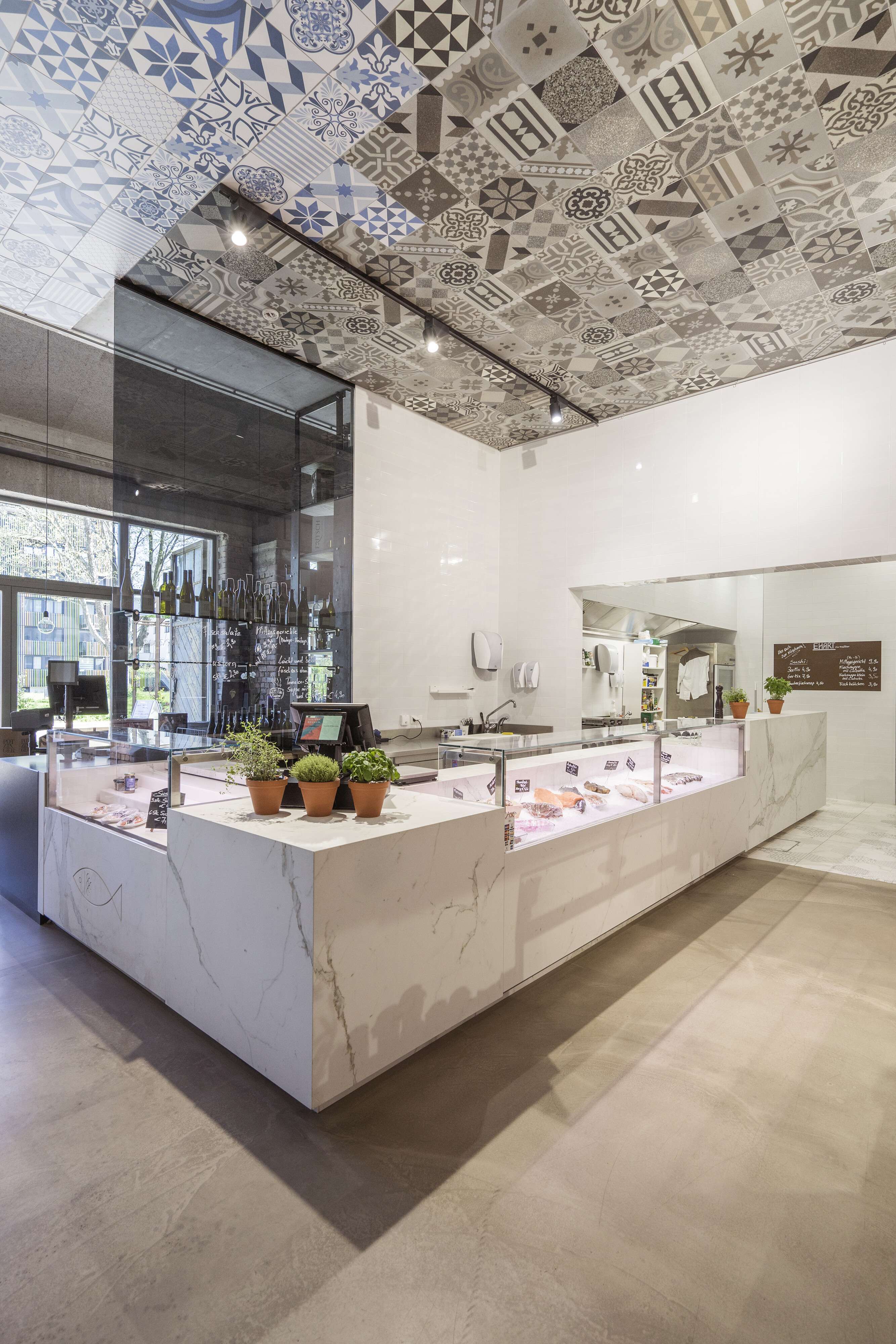
The containers form the structure, while simultaneously performing the role of buckle from room to room. But they also fulfill a very pragmatic purpose: in addition to the inexpensive construction costs, they contain the building’s mechanical and electrical equipment, like the ventilation system.
“The system is flexible with various configuration possibilities. The shop spaces are completely integrated in the containers, be it with awnings or two-storied and represent the variety of operators. The design incorporates the needs and presentation of the individual products. We developed a system that facilitates a great degree of variety with very few resources.” Materiality and Design From radiant flower shops to a variety of culinary stands with premium teas, coffees, ice creams, sweets, meat and fish on offer, the market hall houses a colorful coming and going that is embodied by its design as well. The materiality, ceramics and tiles, is repeated in numerous variations and reappear depending on the goods a shop offers. Each vendor also has access to exclusive display areas, on shelves made of weathering steel or intricate wooden constructions. In the seemingly random lies order.

“Each shop has its own colors, patterns and materials. However, you will not find any defined borders or set areas—everything morphs into everything.” In addition to showcases, shelves and presentation areas, tables of varying height are also used, thus ensuring that working spaces or service areas are also individually designed. You can lean, stand or sit—but classic countertops are nowhere to be found. Microcosm Thanks to the fact that the owner hand selected and invited operators and vendors to participate, Panzerhalle functions as an exquisite microcosm across nearly 18,000 square meters. The offer extends beyond the market hall and can also fulfill external functions. For example, the restaurant has a connected event room, while the stylish loft above can be used for smaller, private events. Panzerhalle is multifunctional and thought through down to the smallest detail thus creating its own microcosm amidst suburban, industrial and heterogeneous surroundings, which is left behind entirely once visitors cross the threshold.
“The open system is truly inviting—you are naturally apt to take your time, to observe the producers manufacturing their goods or preparing their products. Thus, you not only learn about their background in a playful manner, but also meet the person behind the product.”
